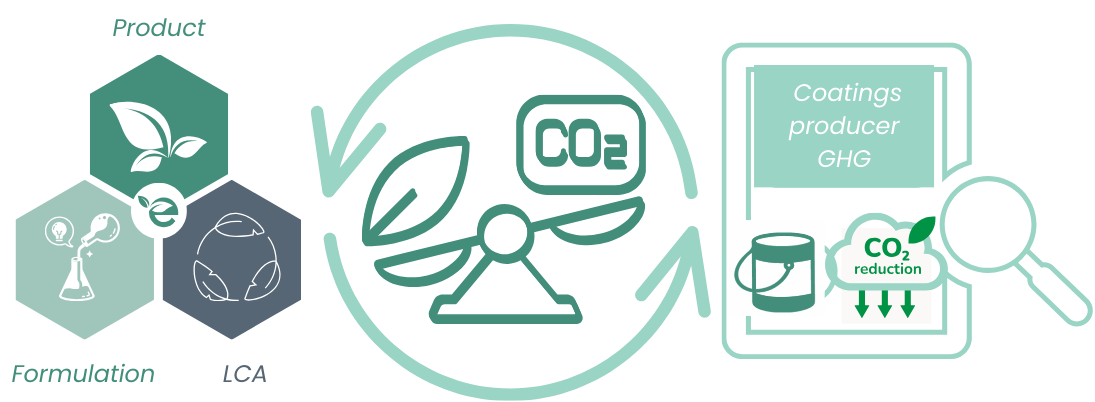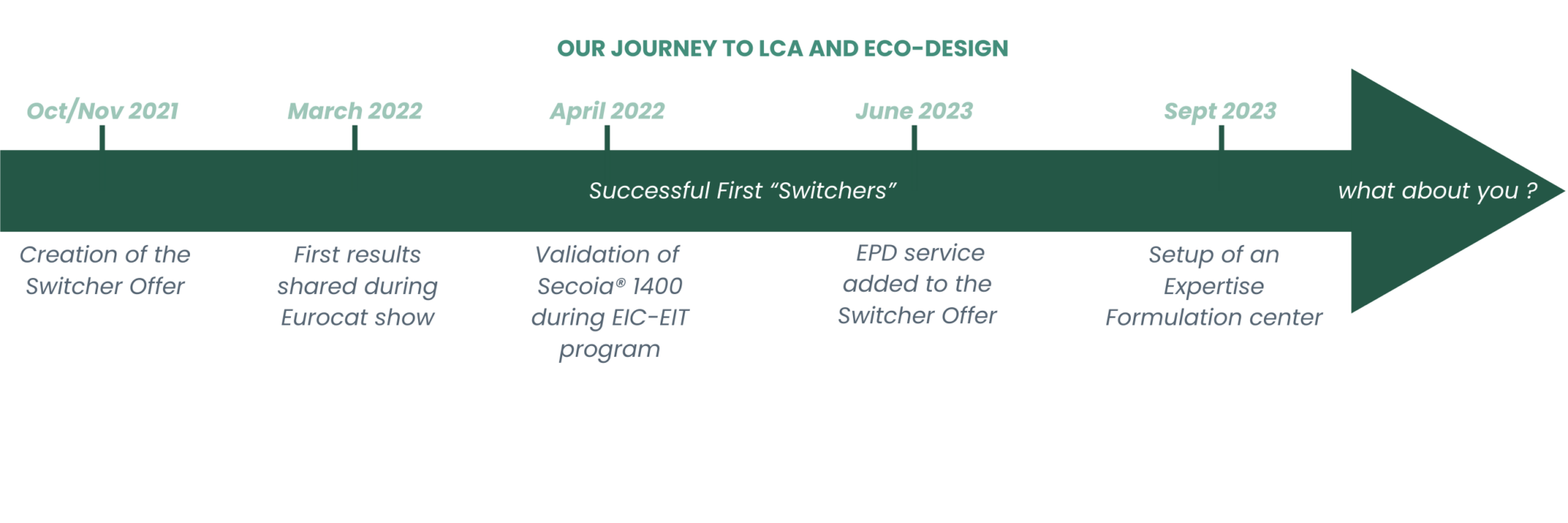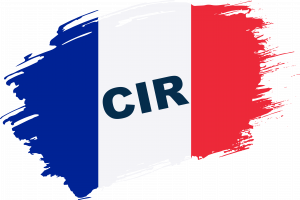The Switcher offer, a tailor-made service to support your ecological transition
In a context where the coatings industry needs to accelerate its Greenhouse Gas emissions reduction, which is largely born by the raw materials, Ecoat has launched an offer called « Switcher ». This service aims at helping paint manufacturers to speed up their ecological transition through ecological design approach, using formulation support, Life Cycle Assessment (LCA) studies and marketing advice if needed.

The 3 steps of this service for and in collaboration with each customer:

1 Definition of your goals and strategy together
Through meetings, and under a Non-Disclosure Agreement (NDA) we identify your sustainability scope, your Corporate Social Responsibility (CSR) scope. We also determine the market target, and the timing frame.
2 Answer your needs through formulation, LCA/EPD
In this step, our experts proceed to realize the LCA study to evaluate the environmental impact, especially the global warming potential (GWP). We evaluate the gain you could get when using bio-based binders versus your current petro-based binders. We can also bring technical assistance to fine tune your paint formulation.
3 We help you settle your new strategy!
We support your product launch through technical and marketing advice to avoid greenwashing allegations and value your ecological approach.
It is not the end and we can go beyond: giving you tracks/ideas to further improve and enter the virtuous circle of eco-designing.
Our expertise & journey to LCA & ecodesign :


A Switcher team is now in place with four highly skilled people working hand in hand with customers and engaging them into the ecological transition.
During the first studies focused on interior wall paints, we have always been able to show benefits when switching from/replacing part of petro-based styrene-acrylic binders by our bio-based SECOIA® 1400, with a gain of minimum few % up to 30% on the carbon footprint of the paint when you take into account biogenic carbon (CO2 storage effect of biomass, due to photosynthesis).
LCA integrated from the earliest design phases helps to avoid “false good” ideas by considering the full impact. It’s the combination of chemistry, performance and LCA that enables us to design the most virtuous product. Our customer will also be able to highlight its eco-design approach when responding to tender from DIY superstores, which themselves, under pressure from consumers, include sustainable development objectives in their specifications.
Our feedback following our first Switcher projects is that not all the bio-based ingredients allow to decrease the carbon footprint, and that some carbon-free products (minerals) can have a high carbon footprint as well. Indeed, the process is important too.
Beyond carbon footprint, LCA is a must as it allows also to watch out other impacts from cradle to grave.

Following the success of 2022 first studies, and on the growing demand of our SME customers, we have decided to integrate Environmental Product Declarations (EPDs).
As a matter of fact EPDs have become an accepted means of communicating the environmental footprint of construction products such as paints and coatings. It provides a basis for buyers to compare products from different suppliers. The data users of EPDs, such as planners and auditors who create sustainability certification for buildings (LEED for instance) are placing ever-greater requirements on data quality.
As a binder manufacturer, Ecoat is integrated into the paint value chain and contributes to the transparency and accuracy of the results. Such EPD is verified by a third-party and provides reliable data to the buyers of building materials.
For our French customers that can beneficiate from CIR…
Only for our French customers, we have the accreditation for you to benefit from the CIR (Crédit Impôt Recherche – Research Tax Credit). In France, the research tax credit is a tax reduction calculated on the basis of research and development expenses engaged by companies. It is deductible from the income or corporation tax due by companies in the concerned year.
The research tax credit (CIR) is designed to encourage companies to invest in research and development (R&D) activities. The CIR rate varies according to the company’s geographical location.
We know price can sometimes be an issue, but the environment is a priority so we want to be able to help our clients to still develop more sustainable coatings and lower their footprint on the planet.
Discover how to benefit

